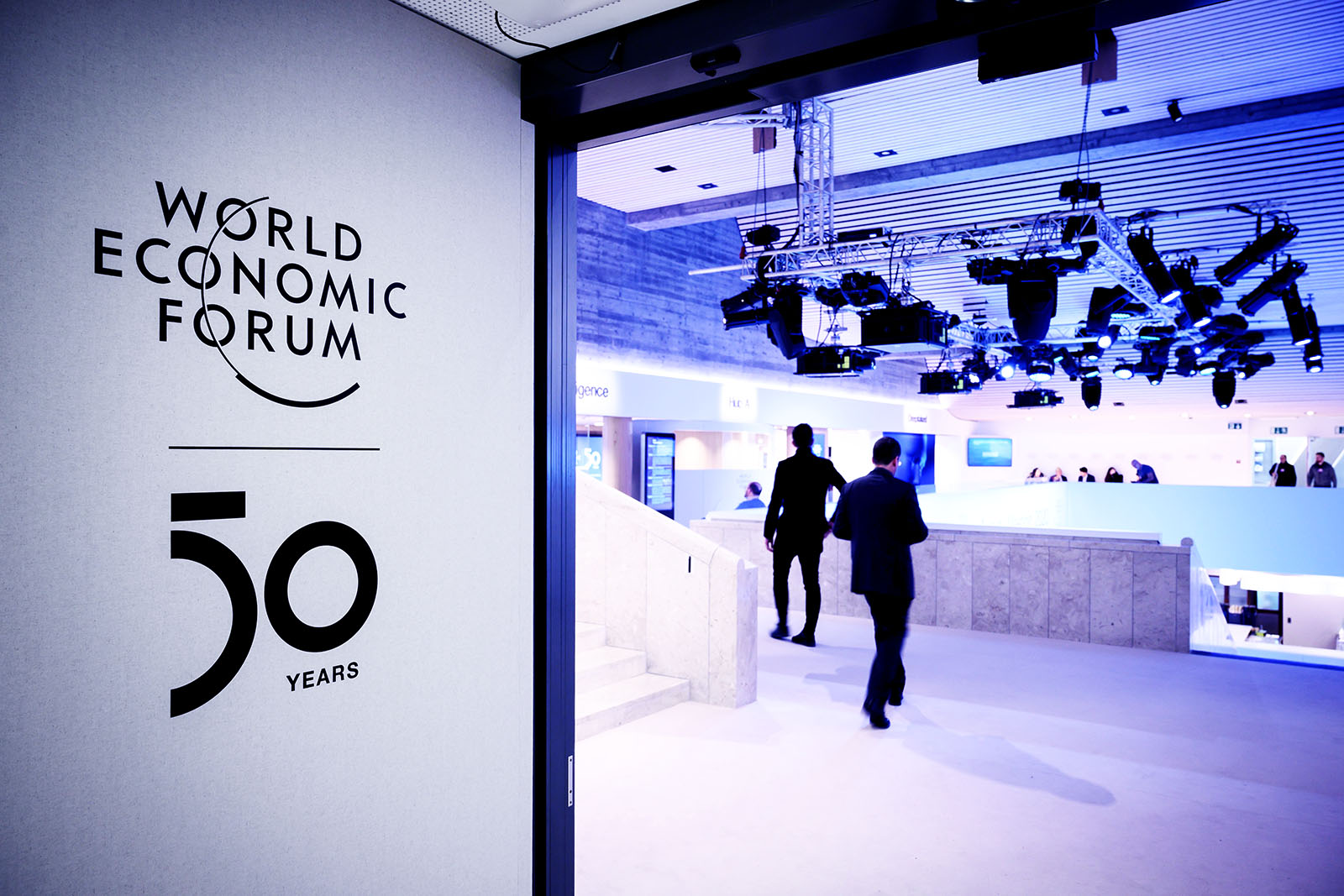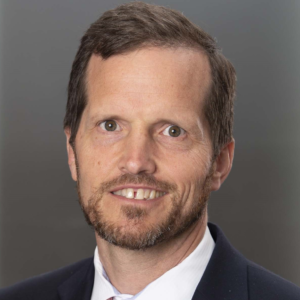How Can Large Asset Owners Make the Most of Nontraditional Risks?

A World Economic Forum sign at the Congress center ahead of the WEF's annual meeting in Davos. Collaboration with other asset owners offers the opportunity to share viewpoints, experience and strategic thinking, which is the ultimate value of the World Economic Forum’s annual meeting in Davos.
Photo: Fabrice Coffrini/AFP via Getty Images
Asset owners and investment managers pursuing sustainable capital growth face a new world of risk. The challenges, as highlighted in the World Economic Forum’s most recent Global Risks Report, don’t fit within conventional investment theory. They are nontraditional, from the physical and economic impact of climate change to the unknown path of future technology. Then there’s the volatility of geopolitics, the shift toward aging populations and the issue of water availability — all amid an unprecedented global low interest-rate environment.
Seizing the Opportunity
In addressing these issues — and many other global questions — the 2020 World Economic Forum Annual Meeting, underway in Davos, Switzerland, has its work cut out. One of the panels this year, led by Rich Nuzum, president of Mercer’s Wealth business, focused on Transformational Investment. It sought to explore how large asset owners, such as insurers and sovereign wealth funds (SWFs), can support sustainable outcomes in the face of these systemic risks, through leveraging their size, sophistication, long-term horizon and collaborative efforts.
Complexity and Governance
The complexity of global risks facing the investment community calls for careful analysis of investment strategies. Along with their impact on economic growth, these challenges will directly affect the environment, society and practices across the workforce, health and educational systems.
- Current geopolitical tensions and the rise of populism and protectionist policies may appear as short- or medium-term noise, but have the potential to slow or even reverse globalization.
- Demographic challenges from aging populations are increasing social and health care costs, while the need to support a positive demographic transition in Africa and southern Asia requires the creation of jobs for their growing workforces.
- The challenge of global climate change and water scarcity focuses leadership on the need to support a transition to a low-carbon economy and mitigate the physical damages caused by global warming.
- Technology advances have the ability to be a force for good in helping to address these risks, while also presenting the prospect of much bleaker outcomes if mismanaged or misused.
- Low and negative interest rates create new challenges as investors seek return in a global economy marked by indebtedness, slower growth and risk of inflation.
These risks rank so highly in overall risk assessment partly due to the nature of the challenges they represent. Investors have not yet developed robust governance frameworks to assess and manage most of them, and so they struggle to identify the best actions to take. In addition, the time horizons involved mean that many asset managers will not fully reflect these risks in managing traditional investment mandates. A different approach is required.
As Mercer’s panel discussion at Davos showed, these trends interact in a variety of ways, creating increased risks and opportunities for large asset owners around the globe whose broad presence marks them as universal owners, well-placed to contribute to sustainable capital growth. They have the capability to improve both long-term financial and societal outcomes and cannot ignore the potential for the economic costs these systemic risks create.
Through an effective governance and policy framework, leading investors will outline the approaches they are taking to adapt their investment policies, procedures and mandates to make transformational investments.
Today’s investment leaders can move toward a brighter future of generating both long-term financial returns and creating sustainable outcomes for all stakeholders.
An Effective Framework
Mercer proposes a multi-step governance framework for large asset owners, such as SWFs, to guide decision-makers through critical considerations and identify opportunities to benefit from collaboration. Relevant questions for each step uncover characteristics of each risk and set a base framework for success.
For starters, funds should consider the holistic impact of each risk on objectives, the funding entity and ultimate beneficiaries, including and beyond the context of investment return and risk. Does the risk pose a threat to the continuation of funding or to beneficiary well-being, separate from investment returns?
The progress to date in addressing climate risk has illustrated the value of engaging with similarly focused asset owners and stakeholders including regulators, banks and other finance industry leaders who are concerned about the same risks and opportunities. Just as important is engaging with internal stakeholders to ensure a common understanding and shared investment beliefs, which ultimately frame investment policy and its implementation in the portfolio. Forming a common language and clear strategy for action when engaging on these topics is central to achieving effective outcomes, coordinating action and avoiding duplication of efforts.
Long-term investors need to consider action that has the most significant effect — for example: adjusting a strategic asset allocation. Which asset classes and sectors will likely outperform or underperform as a result of each of these risks? Similarly, rethinking how the mandates of investment managers and investment teams allow for the appropriate consideration of nontraditional risks is important. It can help show how new opportunities are best invested for long-term investors to meet their objectives. These are fund-level considerations that are just as meaningful as participating in sustainably themed, targeted or “impact” investments.
Direct engagement can play an important role, too. Corporate practices could produce intended transformation via collaboration with other asset owners. This includes more targeted engagement with corporate management, regulators and governments.
Finally, an effective framework is one that monitors, reports and revisits: What is experience teaching? How should we revisit or adjust our analysis or actions in any of the prior steps? For instance, sophisticated investors are leveraging the benefits of technological advancement as early investors through venture capital and private markets, as well as by upgrading their internal work practices via new systems that improve data intelligence, speed of investment and resource use.
Collaboration with other asset owners offers the opportunity to share viewpoints, experience and strategic thinking, which is the ultimate value of the World Economic Forum’s annual meeting in Davos. Working together, today’s investment leaders can move toward a brighter future of generating both long-term financial returns and creating sustainable outcomes for all stakeholders.






